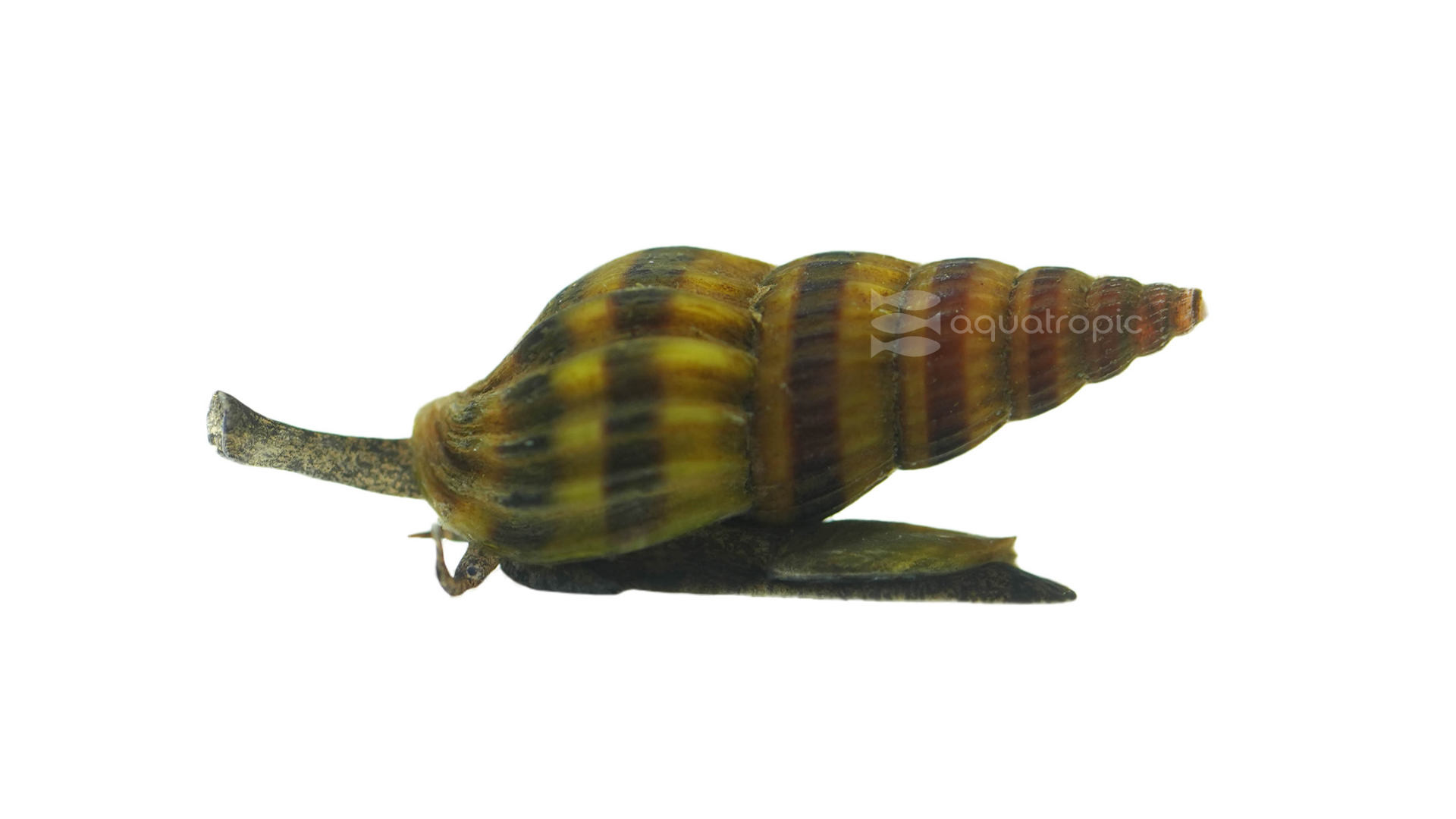Dirty Deeds Done Dirt Cheap (Assassin Snails)

The Assassin Snail has got to have one of the best common names of all invertebrates. It is also occasionally called the bumblebee snail because of its two-color shell, but that name is more appropriately applied to the marine snail Engina mendicaria. If you google, "Anentome helena” you'll see Assasin Snails; if you google “Clea helena” you'll see Assassin snails. This is because of some confusion on the scientific nomenclature side. Clea is the correct genus, but for all of them from Asia they have a sub-genus which is Anentome. The African Clea species are in the sub-genus Afrocanidia. They are part of a larger group (clade) called Neogastropoda, and all of the snails in this genus are carnivorous. Clea helena is one of the few snails in its family (Nassariidae) that isn't a marine species.
Originally described as a species for western science in 1947, they did not get popular as an aquarium inhabitant until the early 2000s when they started to get regularly imported to Europe and the United States. They are a common snail throughout their range in southeast Asia, most commonly exported from Malaysia, Indonesia and Sumatra. They are generally found in the soft sand and muddy substrates of clean lakes, ponds, and slow rivers. As a result of their somewhat tedious reproductive cycle, most Assassin Snails are wild caught.
This is a small snail, usually staying under an inch long in the aquariums where they can live for 3-5 years. As they are often wild caught, their age upon capture is only loosely known based on the number of turns in their shells. While they get their “Bumble Bee” name from the banding on their shells, some specimens will lack this. Solid color Blonde and Brown variants are also frequently available.
Now, on to the good part... why are they called Assassin Snails? Very simply, they are voracious predators of other snails, focusing on snails smaller than themselves, though groups of Assassin snails will take out larger prey as well. As such, they are commonly used to address pest snail issues in captive aquaria. Their diet is not limited to snails however and as a result they can also be an effective removal mechanism for nuisance Planaria in your tanks. Assassin snails prefer to eat other snails and can consume one that is 1/4 its own size once a day. Once this source of food is depleted, they will turn to other foods. They will happily eat other meaty foods you put into the tank, excess pellet and flake foods, even detritus and algae.
In hunting the other snails, Assassin snails will often bury themselves in the substrate (and yes, your display should have a soft substrate for them) and will ambush the prey snails as they draw near. They will also “run down" snails in the greatest low speed chase in captive aquatics! Upon catching prey, the mythology starts, and we regret to report that Assassin snails will not inject poison into their prey as is commonly believed. They smell their prey as it approaches and hang onto it with an extraordinarily strong foot. Their mouth parts include a “proboscis” (envision a very small tentacle) the end of which is studded with small, very sharp teeth. The Assassin snail will use this organ to scrape the prey snail out of its shell, consuming it alive.
Keeping Assassin snails is very straightforward. If your aquarium is housing tropical freshwater fish, these snails should pose no problem for you. A few snails could live in an aquarium as small as 5 gallons. They prefer a neutral pH (think 6-8), normal tropical temperatures, low 70s to 80ish. We've seen a few sources over the years say that this snail has a preference for water on the harder side, but in our experience, this seems pretty irrelevant to their success. Your snails will not bother fish, and extra beneficially, should totally ignore your plants. If added to a shrimp tank, they will eat shrimp they can catch, which is usually limited to babies. If you're looking for reproduction from your shrimp tank, maybe leave Clea helena out.
Captive breeding of Assassin snails makes for an interesting challenge. The process is not complex, but it is slow. The sexes are nearly impossible to tell apart until they are actually mating and at that point, you'll notice the female is usually a bit bigger than the males. You'll need to start with several snails to ensure getting one of each sex as they are not hermaphroditic. During the mating process they will grapple for an extended period of time, up to several hours. The female will lay between one and a few clear egg capsules that are (drum roll) Square! Weird right? These are laid on hard surfaces. Each capsule will contain a single egg, that if fertile, will hatch in a few weeks. They'll reach sexual maturity after six months or so. If your snails aren't mating, try bringing in some feeder snails.
If you have problems with a plague of snails, or planaria, or just want some interesting snails to keep, think about getting a group of Assassin Snails. They are very well equipped for life in the home aquarium, great to look at, and no risk to much but other snails. Head over to your LFS and ask them about sustainably sourced Assassin Snails from Aquatropic today!